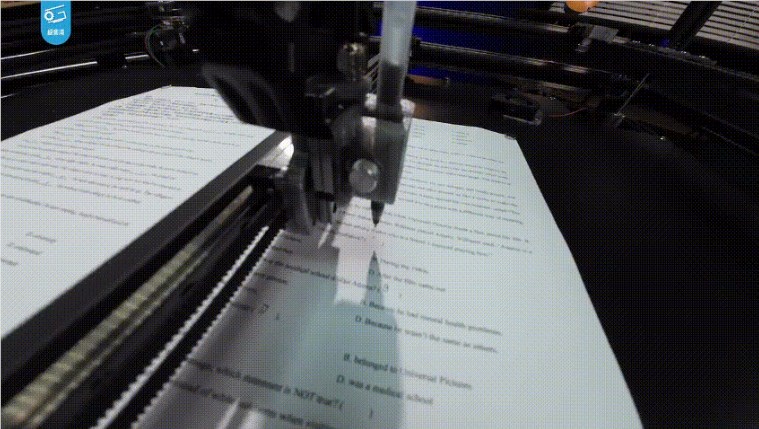Have your childhood dreams come true? Recently, the well-known Bilibili UP主 "Geekbench" released a video showcasing their meticulously crafted AI automatic homework-writing robot, "Daydream," which instantly went viral. Within just two days, the video garnered over a million views and climbed to the 15th spot on Bilibili's overall rankings.
This robot, named "Daydream," is nothing short of a dream come true for countless students. It can not only turn pages autonomously but also answer questions through AI large models, and even mimic human handwriting. What's more astonishing is that it carefully flattens the center of book pages when turning them, showcasing a nearly "human-like" design that has left many netizens in awe.

The birth of "Daydream" was not achieved overnight. The "Geekbench" team spent several months, going through upgrades from version 1.0 to 2.0. Initially, they attempted to modify existing writing machines but encountered a series of technical challenges such as page-turning stability. Ultimately, the team decided to start from scratch, designing and building this intelligent writing robot on their own.
In terms of hardware, version 2.0 adopted a CoreXY structure, significantly enhancing the machine's stability and efficiency. On the software side, advanced AI models like LayoutLM and GPT-4 were utilized, markedly improving the accuracy of answers. These technologies combined allow "Daydream" to handle various types of questions across subjects like Chinese, Math, and English, including multiple-choice, fill-in-the-blanks, reading comprehension, and even writing.

Although "Daydream's" efficiency—completing 44 pages of homework in 3 hours—still has room for improvement, it undoubtedly offers a new possibility for reducing students' burdens. However, this invention has also sparked profound reflections on the essence of education. Some netizens joked, "You did a great job, but here's a fun fact: most schools have already started." This not only highlights the practicality of "Daydream" but also reflects some public skepticism about educational methods.
Whether you are an adult already in society or a student striving in school, "Daydream's" emergence resonates deeply within people's hearts. It is not just a machine that can replace manual homework completion; it is a vivid example of how technology fulfills childhood fantasies. This innovative invention showcases how technology changes our lives and brings new directions for thinking in the field of education.
As AI technology continues to advance, smart devices like "Daydream" may increasingly enter our lives. While they provide convenience, they also remind us to rethink the essence of education and future learning methods. While appreciating this technological marvel, we must also seriously consider how to find a balance between technological development and educational intentions, ensuring that technological progress truly serves education rather than becoming a tool for avoiding learning.










